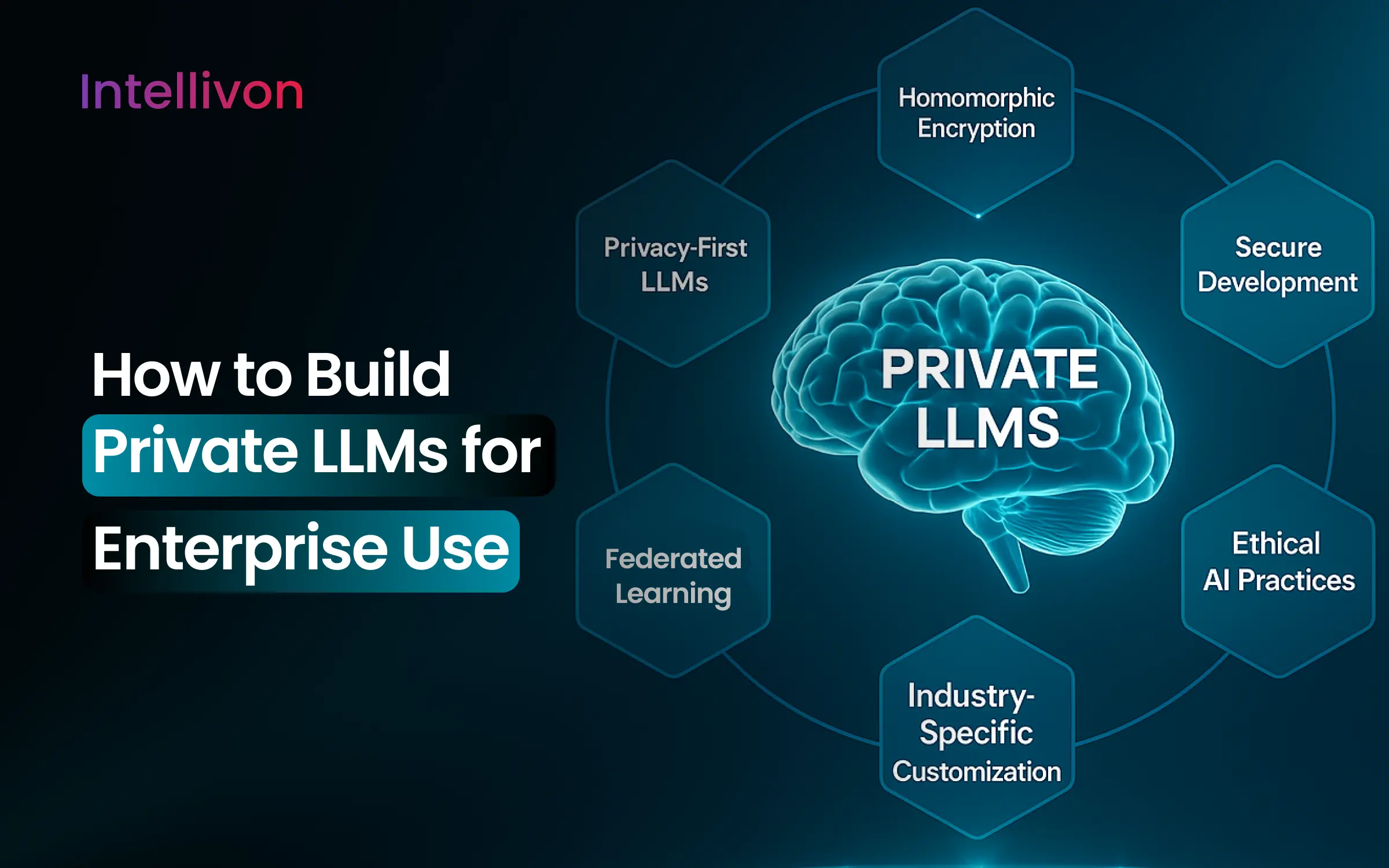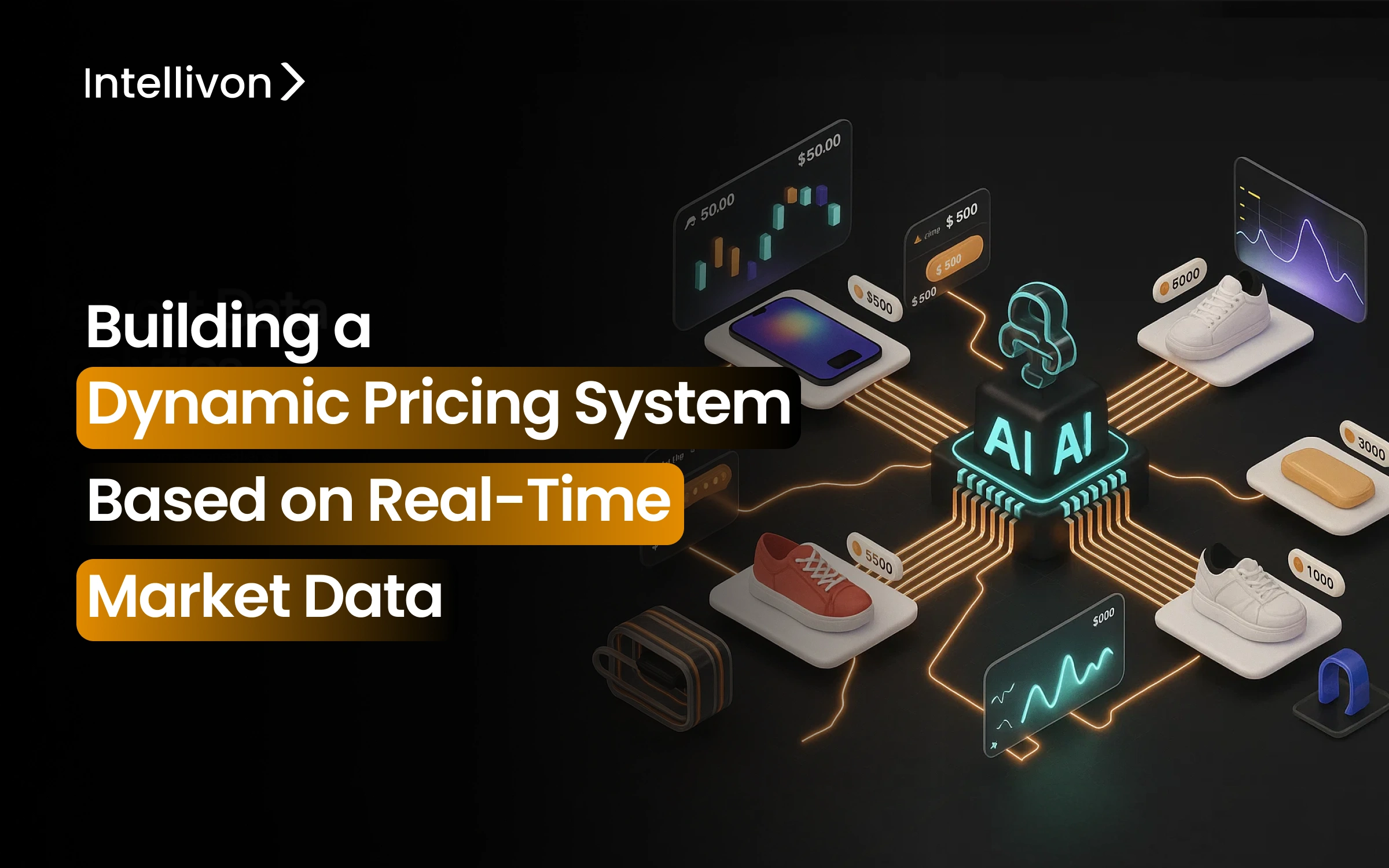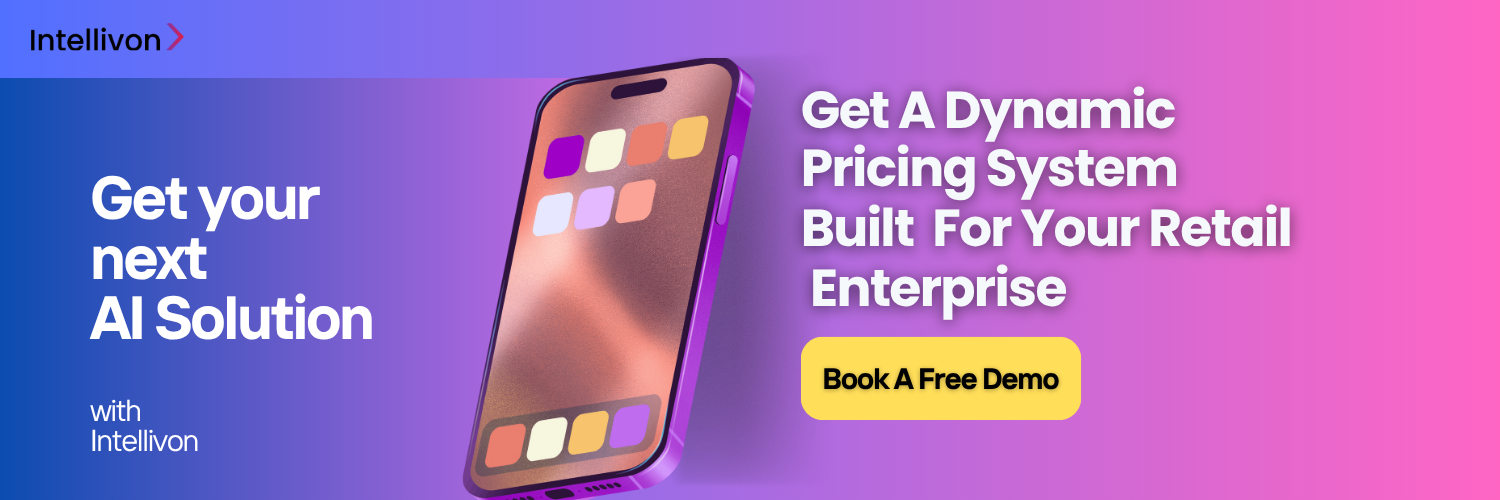Leading enterprises are struggling to keep up with the fast pace of price change. By the time they adjust prices to match market standards, the market has already shifted again, leaving them a step behind and profit slipping through the cracks. Meanwhile, competitors who can adapt in real-time are capturing more market share and maximizing their margins.
For instance, these leading giants are pioneering the retail space due to their adaptive pricing solutions:
- Uber holds 76% of U.S. rideshare market, dominating on-demand transportation services.
- Airbnb controls 44% of global short-term rental revenue, outpacing hotels and platforms.
- Costco owns 60% warehouse club market, with the highest average sales per store.
- Amazon captures 38% of U.S. e-commerce, five times larger than the next competitor.
Markets are moving too fast. Customer expectations are constantly evolving. Supply chains remain unpredictable. In this landscape, the need for dynamic pricing systems becomes urgent. Traditional models simply cannot respond to sudden changes in demand or supply disruptions without incurring revenue loss or lowering profit margins.
In this blog, we will cover why your retail enterprise needs a dynamic pricing system in place, how it will benefit you, how we build and integrate such software into existing legacy systems, and how to keep your pricing model risk-free. As a provider of AI pricing solutions for enterprises worldwide, Intellivon’s pre-vetted AI experts focus not only on the technology stack but also on the strategic alignment that goes into building scalable, intelligent pricing systems that adapt in real-time and align with broader enterprise goals.
Why Real-Time Pricing Is Essential for Enterprises Now
The way enterprises approach pricing has undergone a fundamental change. Traditional models relied on fixed or seasonal pricing, with updates planned weeks or months in advance. Today, that level of rigidity no longer works. Dynamic pricing systems introduce a more responsive approach, where prices adjust continuously based on real-time factors like demand, competitor movements, inventory levels, and market trends.
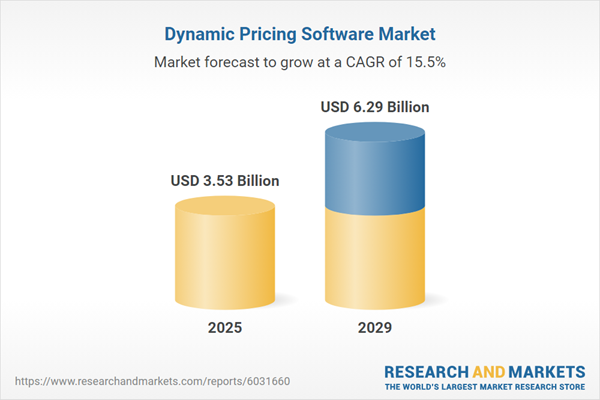
- 25–30% of UK and European businesses use dynamic pricing systems in 2025.
- Adoption rates are increasing year-on-year across enterprise sectors.
- Amazon updates prices every ten minutes using advanced machine learning.
- Walmart is deploying digital price tags for instant, automated pricing updates.
- Thousands of staff hours saved through real-time price change capabilities.
- Zara and Target have fully integrated AI-based dynamic pricing systems.
Integrating an AI and ML-led dynamic pricing system is the right move for your business now because of the following evolving trends:
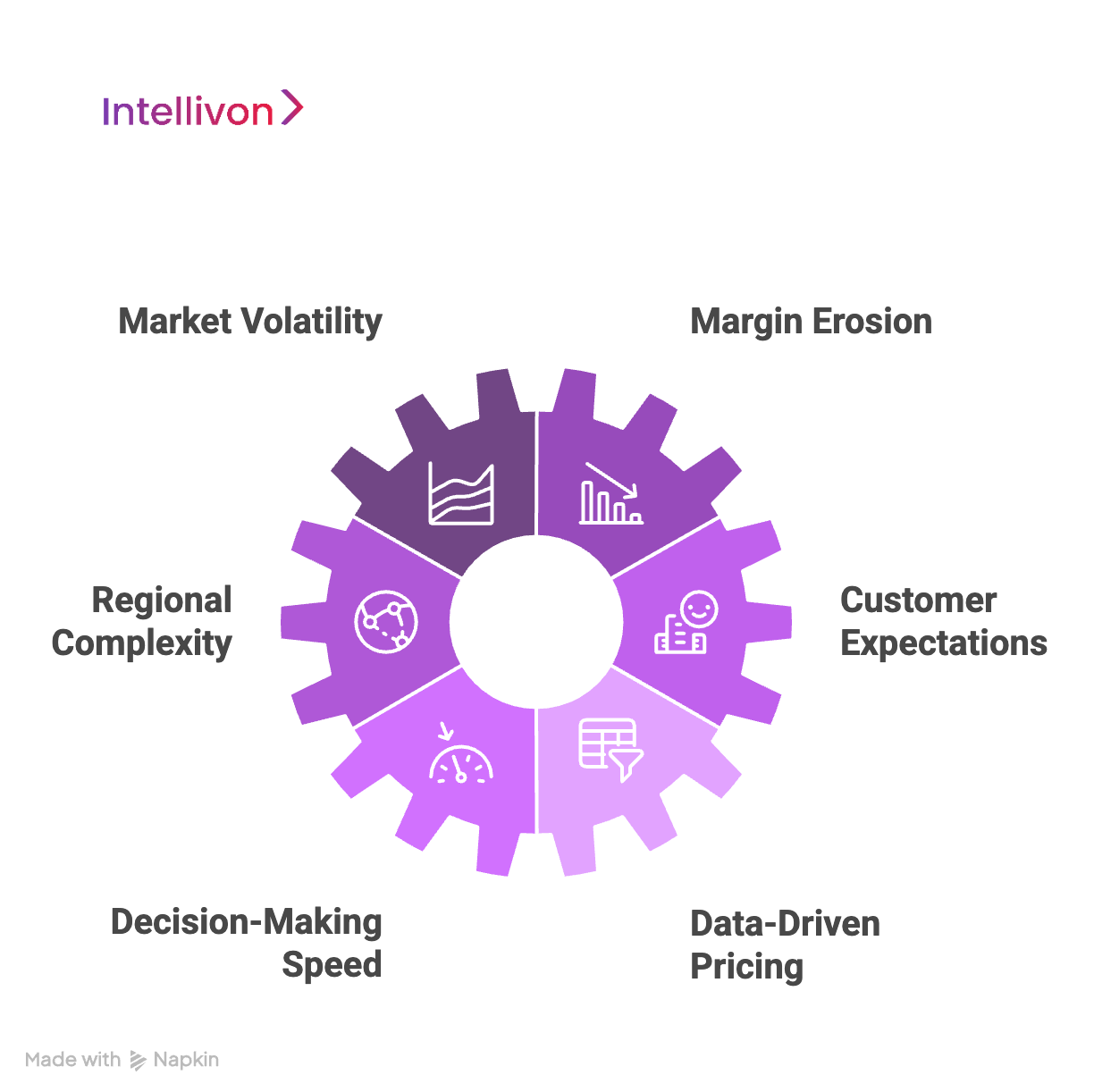
1. Market Volatility Demands Speed and Precision
Today’s markets are too unpredictable for static pricing models. From inflation spikes to sudden shifts in consumer demand, enterprise pricing must respond in real time. Dynamic pricing systems enables companies to adjust quickly and accurately, thereby protecting margins and remaining competitive in rapidly changing conditions.
2. Real-Time Pricing Prevents Margin Erosion
Outdated pricing often leads to undercharging in high-demand periods or overpricing during slowdowns. This erodes profitability over time. With a real-time pricing engine, enterprises can continuously align prices with market demand, ensuring they optimize for both revenue and margin at scale.
3. Region-Specific Pricing Complexity Is Growing
Multinational enterprises face different pricing pressures in every market. UK energy firms deal with volatile wholesale prices and regulation, while U.S. retailers manage seasonal demand spikes. A dynamic system can account for these regional nuances, applying localized pricing logic without manual intervention.
4. Customers Now Expect Fair, Flexible Pricing
Enterprise buyers and consumers alike are more price-aware than ever. They expect pricing to reflect current value, usage, and availability. Dynamic pricing enables fair, transparent adjustments based on real-world factors, building trust and reducing churn.
5. Static Pricing Slows Enterprise Decision-Making
Without automated, responsive systems, pricing teams spend valuable time reacting to changes manually. A well-integrated dynamic pricing model allows for strategic oversight while letting algorithms handle real-time updates. This frees up resources and enables faster decision-making at the executive level.
6. Data-Driven Pricing
For enterprises focused on transformation, pricing is often an overlooked pillar. Yet it ties directly to revenue, customer experience, and operational efficiency. Building a market-driven pricing system ensures that pricing evolves alongside digital initiatives, powered by AI and intelligent data strategy.
How Dynamic Pricing Systems Work In Enterprises
The backbone of a dynamic pricing system consists of several components working together seamlessly, all designed to process real-time data and optimize pricing decisions. Below is an overview of how AI-driven pricing engines leverage advanced technologies to adjust prices dynamically and effectively.
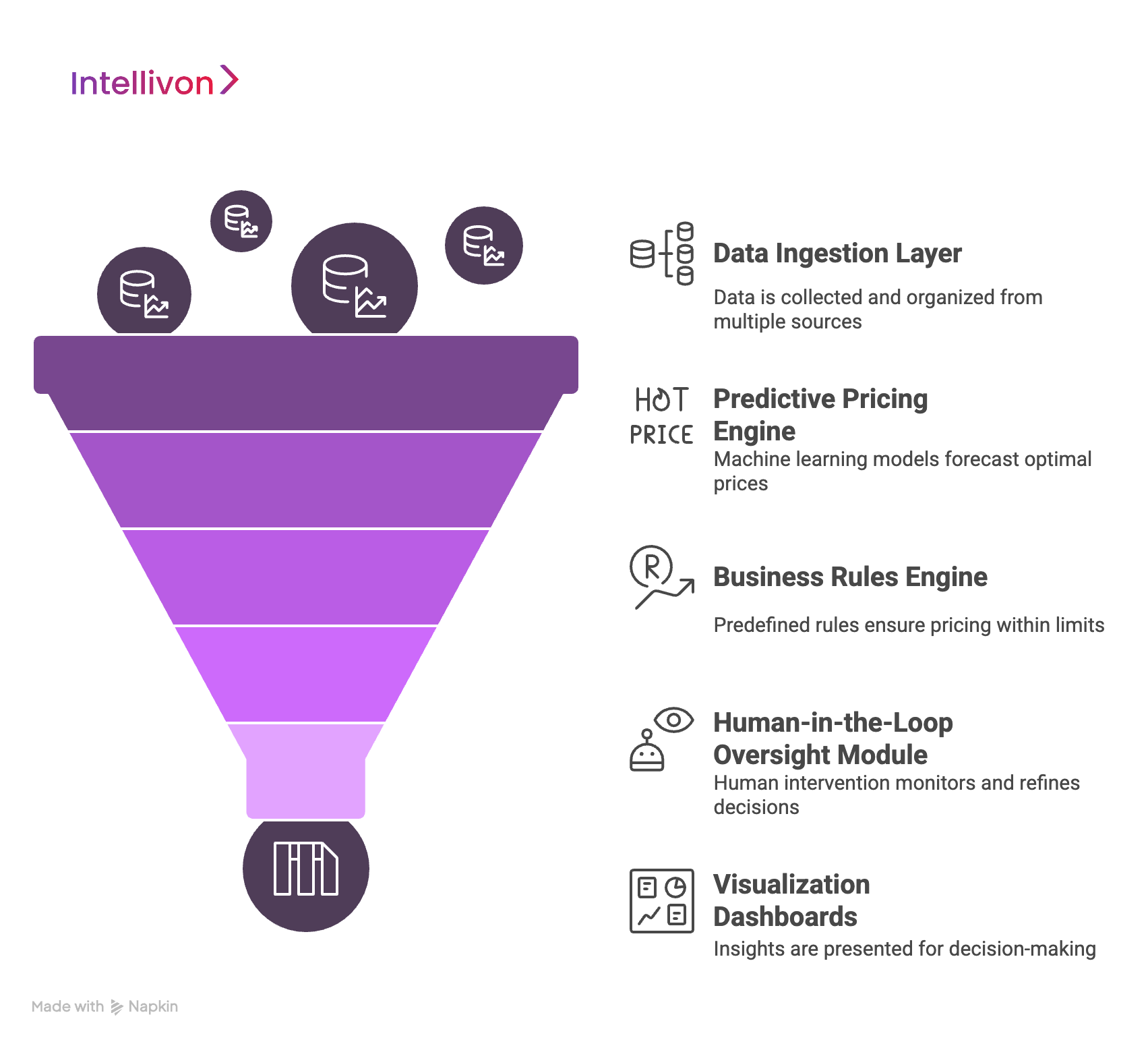
1. Data Ingestion Layer
The data ingestion layer is where real-time market signals enter the system. This includes everything from competitor pricing and customer behavior to supply chain disruptions, weather forecasts, or regional economic changes. Using APIs, third-party data sources, and internal data systems, this layer collects vast amounts of data, ensuring the pricing system is always up-to-date and ready to react.
For example, a retail business can pull in live competitor prices, inventory levels, and customer traffic data to make timely adjustments. This constant flow of data enables real-time, responsive pricing strategies.
2. Predictive Pricing Engine
Once the data is ingested, it’s time for the predictive pricing engine to take over. This is where machine learning models come into play. These models analyze historical data and current inputs to forecast future trends in demand, customer price sensitivity, and market shifts. By doing so, they can predict the optimal price for a product in any given moment.
For instance, if demand for a product suddenly spikes, the system can automatically raise the price to maximize revenue, while also accounting for factors like stock levels and competitor pricing.
3. Business Rules Engine
While machine learning does the heavy lifting of prediction, it’s important to have boundaries in place. This is where the business rules engine comes in. It sets predefined rules to ensure the dynamic pricing engine operates within acceptable limits. For example, companies may set maximum price hikes or floor prices to avoid alienating customers or violating regulatory guidelines.
These guardrails provide a layer of control, making sure pricing adjustments stay aligned with business goals, legal constraints, and customer expectations.
4. Human-in-the-Loop Oversight Module
Even with powerful AI models in play, human oversight remains crucial. The human-in-the-loop oversight module ensures that decisions made by the system are continuously monitored and refined. This module allows pricing teams to intervene when necessary, review complex scenarios, or adjust strategies based on broader business objectives.
For example, a pricing manager can review pricing changes suggested by the system during a promotional campaign to ensure alignment with brand image and customer loyalty goals.
5. Visualization Dashboards
Visualization dashboards play a vital role in keeping everything actionable. These dashboards present pricing insights in an intuitive, easy-to-understand format, allowing decision-makers to monitor performance, track KPIs, and identify pricing trends. Teams can quickly spot outliers, review key performance metrics like margin changes, and adjust pricing strategies when needed.
For instance, a retail chain’s pricing manager can quickly assess how the dynamic pricing system is affecting revenue and make adjustments to boost profitability for the highest-performing products.
In sum, a well-structured dynamic pricing system combines real-time data pipelines, predictive AI models, and human oversight to create a responsive, scalable solution for retail enterprises.
Data Inputs that Make or Break Your Dynamic Pricing Systems
Dynamic pricing engines rely heavily on a rich mix of data inputs. The right combination of external feeds, internal signals, and compliance datasets can mean the difference between pricing success and costly errors. Below, we break down the essential categories of data that power dynamic pricing.
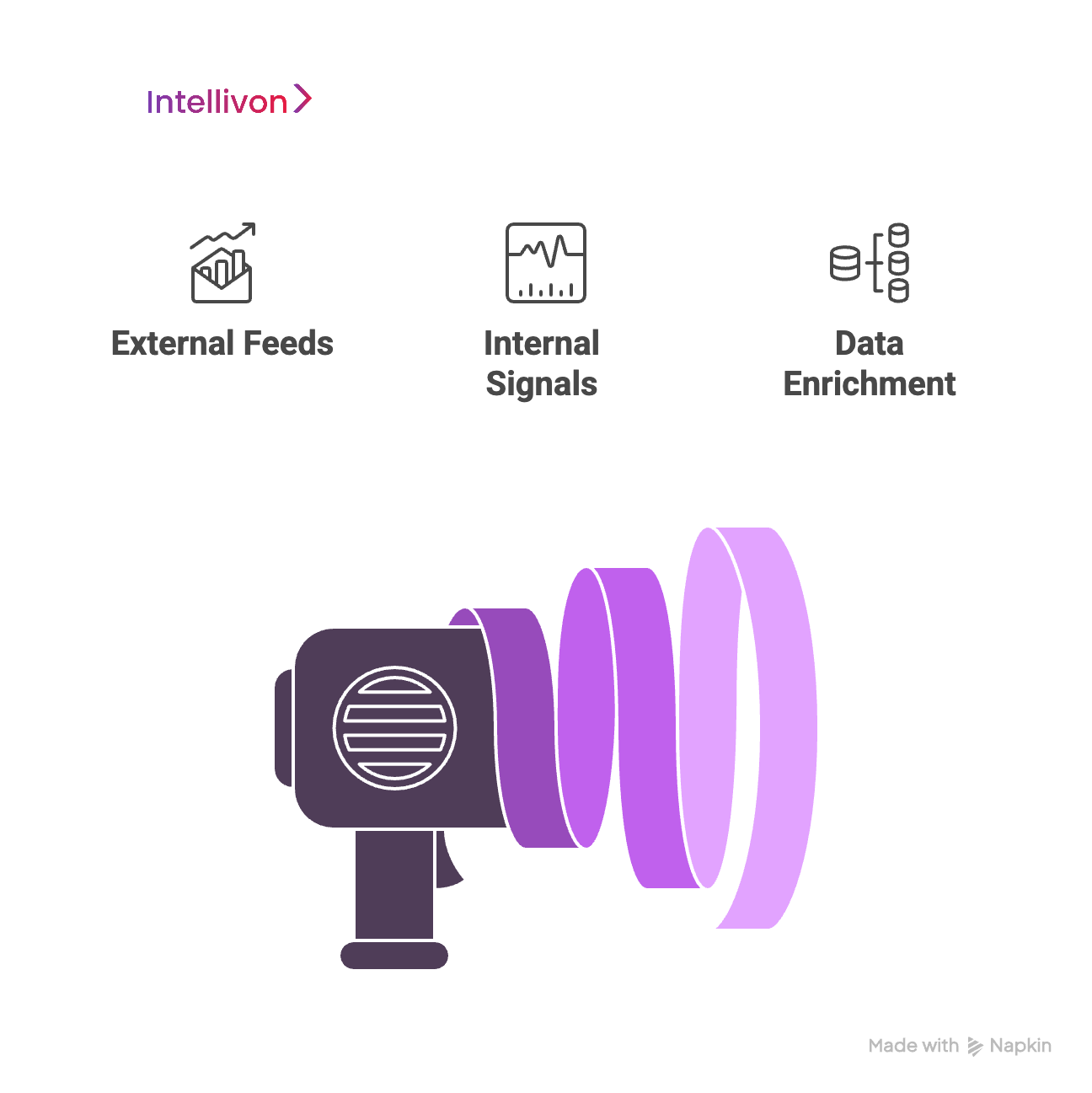
1. External Feeds
Dynamic pricing systems depend on real-time data from external sources to stay agile and competitive. These feeds provide crucial market insights that directly influence pricing decisions.
1. Exchange Rates
For businesses operating across borders, fluctuations in currency exchange rates can significantly impact profit margins. For example, a U.S.-based retailer selling in the UK must adjust prices frequently to account for changes in the GBP/USD exchange rate. A dynamic pricing system can automatically make these adjustments, ensuring profitability remains intact despite currency volatility.
2. Competitor Pricing Intelligence
Competitive pricing intelligence is critical for staying ahead in the market. By continuously tracking competitor prices, promotional activities, and product availability, enterprises can quickly adjust their pricing to remain competitive. AI-powered platforms can automate this process, providing timely insights that allow businesses to fine-tune pricing strategies, avoid pricing errors, and capture market share.
3. Seasonal Demand Curves
Retail businesses must anticipate shifts in demand based on seasonal trends. A well-rounded dynamic pricing system incorporates seasonal demand curves, which utilize historical data and predictive analytics to adjust pricing for holidays, industry cycles, or even unpredictable events. For instance, retailers may increase prices for winter coats ahead of a cold front, or discount products at the end of a season to clear stock.
2. Internal Signals
While external feeds provide market insights, internal data signals offer critical visibility into your business operations. These signals help optimize inventory management, sales strategies, and regional competitiveness.
1. Inventory Levels
Real-time inventory data is a crucial input for dynamic pricing systems. When stock levels are low, prices can be increased to capitalize on high demand. Conversely, if inventory is high and demand is low, discounts or promotions can be implemented to move products. For example, if a retailer’s stock of a popular phone model begins to dwindle, the system can increase the price to maximize profit on remaining units.
2. Sales Velocity
Sales velocity, which is the speed at which a product sells, is a strong indicator of demand elasticity. If a product is selling out quickly, the dynamic pricing system can raise its price based on demand forecasts. This ability to react in real-time ensures that retailers optimize their revenue by adjusting prices to match consumer behavior.
3. Regional Performance
Retailers often see variations in sales performance across different regions. Regional performance data helps businesses identify which areas are underperforming or outperforming. By analyzing localized trends and preferences, companies can tailor pricing strategies that ensure both competitiveness and profitability in each market. For example, a product that sells better in urban areas may be priced higher than in rural markets to align with local purchasing power.
3. Data Enrichment for AI: Turning Raw Data into Strategic Assets
To truly harness the power of dynamic pricing, enterprises must enrich both internal and external data. Data enrichment processes use AI and machine learning to add context, fix inconsistencies, and integrate third-party data, transforming raw data into valuable, actionable insights.
Through techniques such as NLP and automated data standardization, AI-driven data enrichment ensures that dynamic pricing systems are based on accurate and complete datasets. For instance, enrichment could involve integrating external data sources, like market reports or customer sentiment analysis, to refine the pricing model’s recommendations, making them more precise and actionable.
How We Build Dynamic Pricing Systems For Your Retail Enterprise
Building a dynamic pricing system for your retail enterprise requires a strategic, data-driven approach. At Intellivon, we combine deep industry knowledge with advanced AI to create robust pricing solutions that help enterprises stay competitive, agile, and profitable. Here’s a look at how we build dynamic pricing systems tailored to your business needs.
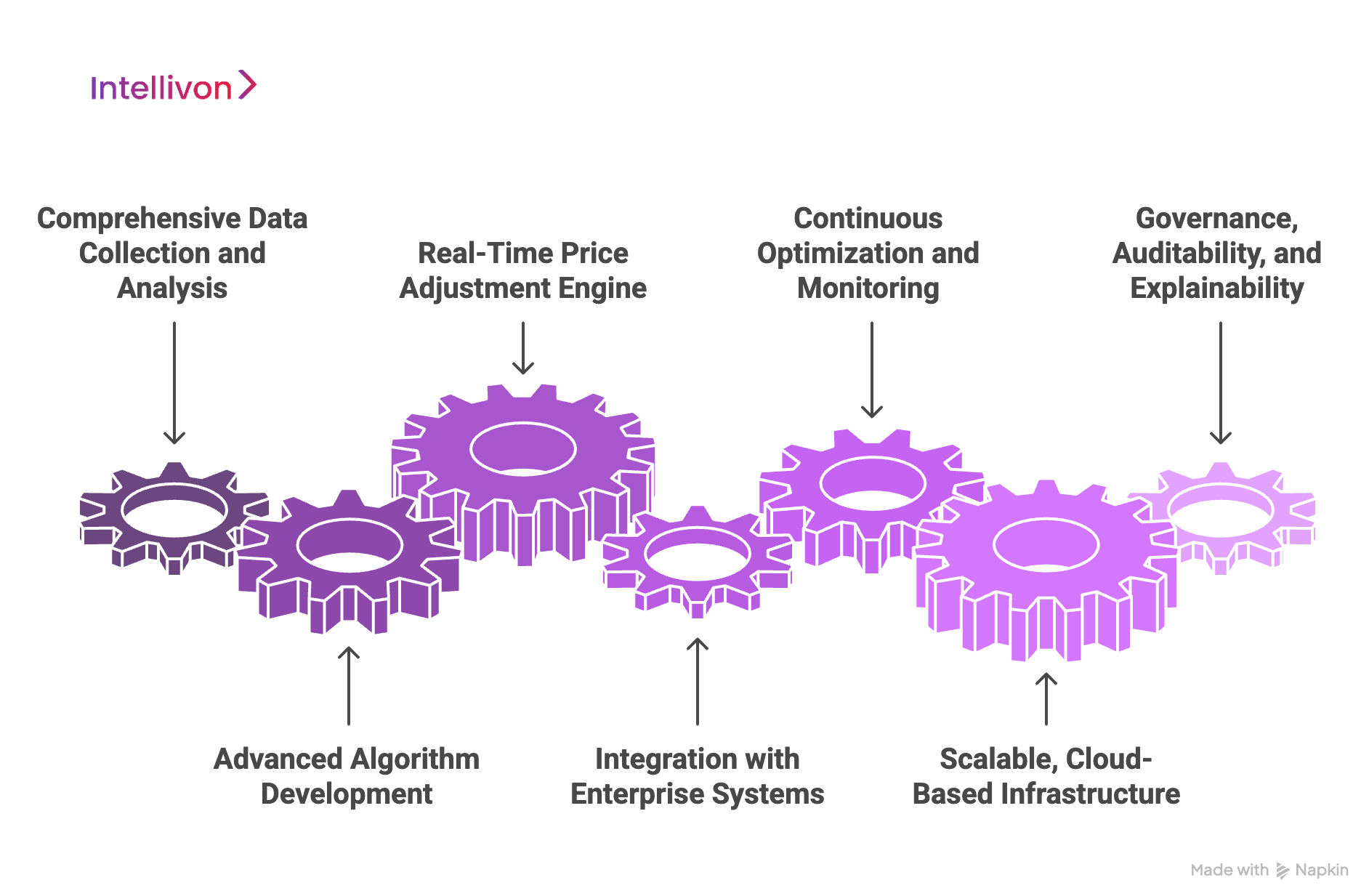
1. Comprehensive Data Collection and Analysis
The foundation of any dynamic pricing system is data. To ensure our models are effective and responsive, we begin by collecting and analyzing data from a wide range of sources:
- Historical Sales Records: Analyzing past sales trends allows us to identify pricing patterns and demand shifts.
- Real-Time Inventory Levels: Live stock data helps us adjust prices based on availability, ensuring you don’t miss out on profitable opportunities.
- Market Demand Signals: We monitor external factors such as market trends, news events, and seasonal changes that impact product demand.
- Competitor Pricing Intelligence: By tracking competitor prices, we can ensure your prices are competitive while maintaining profitability.
- Customer Behavior and Segmentation: Understanding customer buying patterns helps us tailor prices to different segments for maximum impact.
- Seasonal and External Factors: Weather, holidays, and special events can have a major effect on retail sales and pricing strategies.
By aggregating this data, we ensure that your pricing models are not only responsive but also context-aware, making adjustments that align with both business goals and market conditions.
2. Advanced Algorithm Development
The next step is applying advanced AI and machine learning ML to turn the raw data into actionable insights. Our algorithms are designed to:
- Identify Key Pricing Parameters: We analyze the data to pinpoint which factors most influence price elasticity and consumer purchasing behavior.
- Learn from Historical Outcomes: Using historical data, our models learn from past pricing decisions to improve future predictions and actions.
- Adapt to Emerging Market Trends: Our algorithms can detect changes in the market, such as sudden shifts in demand, and adapt pricing strategies accordingly.
We choose from the best machine learning techniques, which include regression analysis, decision trees, or neural networks, based on the complexity of your data and specific business needs. This flexibility enables us to deliver the most accurate and effective pricing models tailored to your enterprise.
3. Real-Time Price Adjustment Engine
A core feature of our dynamic pricing system is the ability to adjust prices in real time. Here’s how our real-time price adjustment engine works:
- Price Increases During High Demand or Low Stock: When demand spikes or inventory runs low, the system will automatically increase prices to capitalize on market conditions.
- Discounts to Move Excess Inventory: If certain products are overstocked, our system can trigger discounts to move inventory quickly, preventing stockouts and freeing up shelf space.
- Competitive Price Matching or Undercutting: The system can monitor competitor prices and adjust your pricing to either match or strategically undercut them, ensuring you stay competitive in the market.
Every adjustment is made based on pre-set business constraints, ensuring that profitability goals are met without sacrificing customer trust or brand integrity.
4. Integration with Enterprise Systems
A successful dynamic pricing system must work seamlessly with your existing business infrastructure. We ensure smooth integration with your core systems, including ERP, CRM, and inventory management platforms. This integration ensures:
- Data-Driven Pricing Decisions: Prices are always based on the most current operational data, from inventory levels to customer order history.
- Automation with No Manual Intervention: Once integrated, pricing updates are automated, reducing manual intervention and ensuring timely adjustments across all sales channels.
- Consistency Across Channels: Whether your products are sold online, in-store, or through third-party platforms, your pricing remains consistent, eliminating the risk of pricing discrepancies.
5. Continuous Optimization and Monitoring
Our work doesn’t end once the pricing system is in place. To ensure long-term success, we continuously optimize and monitor the system:
- Continuous Learning: As new data is collected, the pricing model continually refines itself, improving accuracy over time.
- Performance Monitoring: We use analytics dashboards to track how well the pricing system is performing, identifying areas for improvement and making data-driven adjustments.
- Refined Pricing Strategies: Based on insights from the data, we continuously refine pricing strategies to maximize revenue, improve customer satisfaction, and respond to shifting market conditions.
6. Scalable, Cloud-Based Infrastructure
To ensure that your dynamic pricing system can grow with your business, we deploy it on a scalable, cloud-based infrastructure. This allows us to:
- Handle Billions of Price Computations: Our cloud-based system can scale effortlessly, ensuring fast and efficient price calculations, even for businesses with millions of SKUs.
- High Availability and Reliability: Cloud deployment ensures that your pricing system is always available, with minimal downtime or disruptions, even as demand fluctuates.
- Rapid Response to Market Changes: Cloud-based systems can react to market shifts in real-time, ensuring that your prices are always in sync with current conditions.
7. Governance, Auditability, and Explainability
For enterprise clients, governance and transparency are essential. We ensure that our dynamic pricing system provides:
- Audit Trails: Every pricing decision is logged for complete traceability, ensuring compliance and transparency.
- Ongoing Performance Monitoring: We regularly track model performance, identifying any anomalies or areas where the system may need adjustments.
- Explainability: Pricing decisions are accompanied by clear, understandable explanations. This is especially important for regulated industries or businesses that need to justify pricing to stakeholders or customers.
With AI model governance in place, our system helps you meet regulatory requirements and maintain customer trust while automating pricing decisions.
Cost To Build A Dynamic Pricing System For Retail Enterprises
We provide tailored dynamic pricing solutions designed to drive real-time, data-driven pricing decisions. Our approach ensures seamless integration with your systems, delivering scalable and efficient pricing strategies to boost competitiveness and profitability.
| Component | Description | Estimated Cost (USD) |
| 1. Data Acquisition & Feeds | Cost for acquiring basic external data (market data, competitor pricing, weather, and basic economic indicators). | $10,000 – $20,000 annually |
| 2. Data Storage & Cloud Infrastructure | Cloud storage and database (e.g., AWS, Google Cloud). Focus on smaller scale. | $10,000 – $25,000 annually |
| 3. API Integration & Development | Basic integration with existing ERP and inventory management systems. | $15,000 – $30,000 one-time |
| 4. AI/ML Model Development | Basic AI/ML models for demand forecasting and price optimization. | $15,000 – $25,000 one-time |
| 5. Real-Time Data Processing Infrastructure | Simple data processing tools, minimal use of stream processing for smaller product catalogs. | $5,000 – $10,000 annually |
| 6. Development Team (Internal or Outsourced) | Hiring a small team or outsourcing for system development and integration. | $20,000 – $40,000 annually |
| 7. Testing & Quality Assurance | Basic testing to ensure the system functions correctly for the intended product range. | $5,000 – $10,000 one-time |
| 8. Ongoing Maintenance & Support | Regular updates, monitoring, and minor adjustments as needed. | $10,000 – $15,000 annually |
| 9. Monitoring & Analytics Tools | Simple analytics dashboard and monitoring tools. | $2,000 – $5,000 annually |
| 10. Security & Compliance | Minimal security measures for data protection and regulatory compliance. | $5,000 – $10,000 annually |
The figures above are rough estimates, and the final cost of your project could range from $50,000 to $100,000. For a personalized and more accurate quote, please feel free to reach out and schedule a complimentary consultation with us.
Making Your Dynamic Pricing Systems Enterprise-Ready
Building an enterprise-ready dynamic pricing system requires more than just cutting-edge algorithms. It requires seamless integration, robust governance, and infrastructure that can scale and efficiently handle real-time data. At Intellivon, our AI experts have deep expertise in integrating customized dynamic pricing software into existing legacy systems, without compromising proprietary data. Here is how we make dynamic pricing systems ready for enterprise integration.
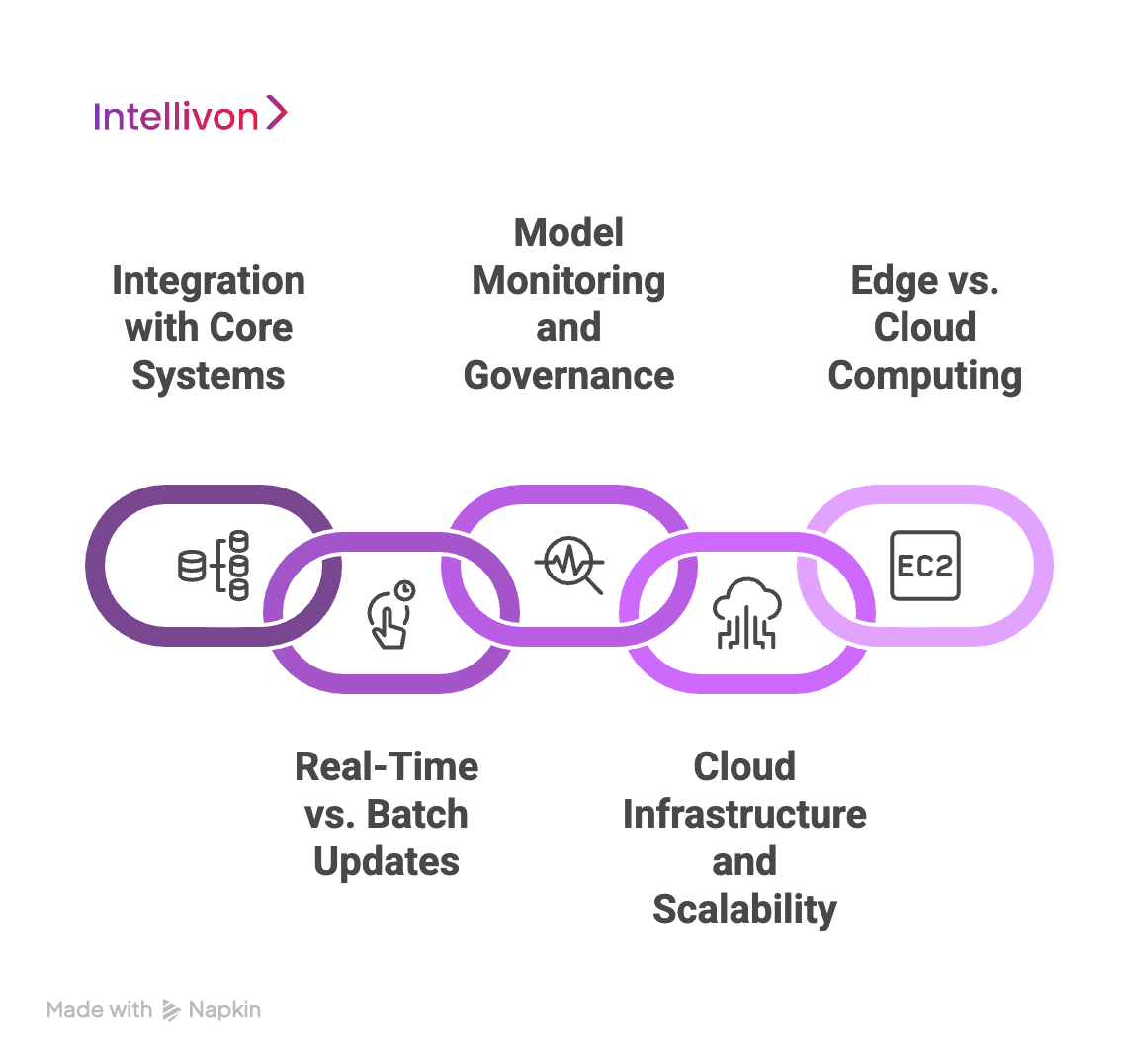
1. Integration with ERP, CRM, and Inventory Systems
For dynamic pricing systems to be effective at the enterprise level, it must be integrated with core business systems. A dynamic pricing API should link seamlessly to ERP, CRM, and inventory management platforms, ensuring data flows smoothly and pricing decisions are based on the latest insights.
- Automated Data Flows: Real-time syncing of inventory, order history, and customer data ensures that pricing decisions always reflect current business conditions.
- Consistent Pricing Logic: Centralized rules and constraints (e.g., minimum and maximum price thresholds) are enforced across all sales channels, ensuring pricing consistency.
- Faster Go-to-Market: Integration reduces manual intervention, enabling enterprises to deploy new pricing strategies quickly, without bottlenecks in operational processes.
By connecting to these systems, dynamic pricing becomes an integrated, agile function within the business, adapting quickly to changing conditions.
2. Real-Time vs. Batch Updates
Enterprises need to consider when to apply real-time pricing updates versus batch processing, depending on the nature of their business and the urgency of pricing adjustments.
- Real-Time Updates: Streaming data pipelines, powered by tools like Kafka, Spark, or Flink, enable prices to update instantly in response to market shifts, competitor actions, or inventory changes. This is essential for environments like e-commerce or travel where prices can change multiple times a day.
- Batch Updates: For less time-sensitive adjustments, such as recalculating prices across a large product catalog overnight, batch updates are often used. These allow for scheduled updates without overwhelming the system.
While real-time updates are becoming the standard for high-frequency pricing environments, enterprises need to balance both methods to optimize system efficiency and responsiveness.
3. Model Monitoring, Audits, and Explainability
To ensure the integrity of AI-driven pricing decisions, AI model governance is a critical consideration for enterprises.
- Continuous Monitoring: Ongoing monitoring ensures models are performing as expected, detecting issues like data drift or anomalies that could lead to pricing inaccuracies.
- Audit Trails: Enterprises must maintain detailed records of model inputs, pricing outputs, and any override actions to support compliance and transparency, especially for regulated industries.
- Explainability: AI models should offer clear, understandable explanations for pricing decisions, making it easier for CIOs, CTOs, and business stakeholders to trust the system. This is particularly important in customer-facing applications where pricing changes need to be justified.
For regulated industries or businesses with high customer visibility, being able to explain how prices are set is crucial for maintaining trust and ensuring compliance.
4. Cloud Infrastructure and Scalability
A scalable cloud infrastructure is essential to support the demands of a dynamic pricing engine in a large enterprise setting.
- Elastic Scaling: Cloud-native architectures automatically adjust computing resources to handle millions (or even billions) of price computations, ensuring that the system can handle fluctuating demand without performance issues.
- Stream Processing: Real-time stream processing systems, such as Kafka, Spark, and Flink, enable enterprises to ingest, process, and act on data with minimal delay, ensuring timely and accurate price adjustments.
- Global Availability: Cloud deployment ensures that pricing logic and data are consistently available across multiple regions and channels, allowing for centralized control while maintaining localized responsiveness.
The cloud also supports the agility and flexibility needed to handle global, large-scale pricing operations.
5. Edge vs. Cloud for Latency-Sensitive Environments
In dynamic pricing, latency can be a crucial factor. Depending on the environment, enterprises must choose the right infrastructure for real-time responsiveness.
- Edge Computing: For latency-sensitive scenarios, such as in-store pricing or IoT devices, edge computing can bring pricing decisions closer to the point of sale. This reduces delays and ensures fast, offline resilience, making it ideal for brick-and-mortar stores.
- Cloud Processing: While the cloud is excellent for centralizing large-scale data, model training, and complex computations, it may introduce some latency. For most enterprises, the cloud is optimal for managing large datasets, running sophisticated AI models, and scaling pricing systems globally.
A hybrid approach, which includes leveraging the cloud for core computations and the edge for local execution, often provides the best of both worlds, ensuring global scalability without compromising on speed where it matters most.
Creating an enterprise-ready dynamic pricing system involves not just powerful AI models but the integration of real-time data pipelines, robust governance, and scalable infrastructure. By implementing a dynamic pricing API, adopting flexible cloud solutions, and ensuring model transparency, enterprises can build a pricing engine that is not only intelligent but also secure, auditable, and able to scale as their business grows.
How We Help De-Risk Your Dynamic Pricing System
Dynamic pricing offers agility and profit, but it also introduces new risks, especially when powered by AI. At Intellivon, we tackle these challenges head-on using best practices, advanced safeguards, and continuous monitoring to ensure that your pricing strategy remains reliable, compliant, and profitable. Here’s how we address the most common risks associated with AI-driven pricing.
1. Poor Data Quality
Problem: Inaccurate, outdated, or incomplete data can severely impact pricing decisions. AI models depend heavily on high-quality data to produce reliable outputs. Without this, pricing can become erratic, harming revenue and damaging customer trust.
Solution:
We ensure data quality is at the core of every dynamic pricing decision. Through rigorous data validation, cleansing, and enrichment processes, we guarantee that only accurate, relevant, and up-to-date data is fed into your pricing models. Our system also continuously monitors for anomalies and data drift, providing ongoing assurance that pricing decisions are based on reliable information.
2. Black-Box Models
Problem: Black-box AI models can make pricing decisions without providing clear visibility into how those decisions are made. This lack of transparency can lead to regulatory compliance issues and erode stakeholder confidence in pricing strategies.
Solution:
We prioritize model interpretability. Our AI systems are designed for explainability, providing clear and understandable reasons for every pricing change. This ensures that business users and compliance teams can easily track and justify decisions, making the system both auditable and defensible in any regulatory review.
3. Regional Misalignment
Problem: Applying the same pricing logic across different regions can lead to non-compliance with local laws or consumer expectations. Pricing strategies that work in one region may violate price discrimination laws or consumer protection standards in another.
Solution:
We tailor pricing models to meet cross-border compliance needs. By embedding region-specific rules and automated compliance checks, we ensure that your pricing engine adapts to local regulations, such as anti-gouging laws or consumer protection standards. This ensures lawful and ethical pricing, regardless of market location.
4. Extreme Price Fluctuations
Problem: AI-driven pricing can sometimes lead to drastic price increases or rapid changes that might alienate customers or damage brand perception. For example, sudden price hikes during high demand or low stock might result in customer backlash.
Solution:
To mitigate this, we implement a hybrid AI + rule-based safeguard system. While AI drives pricing recommendations, human-defined rules set boundaries to prevent extreme price fluctuations. This approach ensures that pricing remains competitive, yet aligned with your brand values and customer expectations. Additionally, manual overrides are available to adjust prices when necessary.
5. Lack of Continuous Oversight
Problem: Without continuous monitoring, AI models can experience performance degradation or unexpected anomalies over time. This could lead to incorrect price recommendations, affecting profitability or customer satisfaction.
Solution:
We provide continuous monitoring of your dynamic pricing system. Regular audits and real-time alerts help detect issues like data drift or unexpected pricing patterns early on. This ensures that your pricing model is always aligned with your goals, and potential risks are caught before they affect the business. Our comprehensive audit logs also support internal governance and regulatory compliance.
Through transparency, compliance, and continuous monitoring, we deliver a robust solution that adapts to market needs while safeguarding your business interests.
Future Outlook: Dynamic Pricing as a Strategic Enterprise Capability
The future of enterprise pricing is evolving rapidly, with dynamic pricing shifting from an operational tool to a core strategic lever. As AI and predictive analytics continue to advance, dynamic pricing will be integrated deeper into business strategy, not just as a reactive mechanism but as a powerful driver of value and growth. Here’s how the future of AI pricing trends is unfolding:
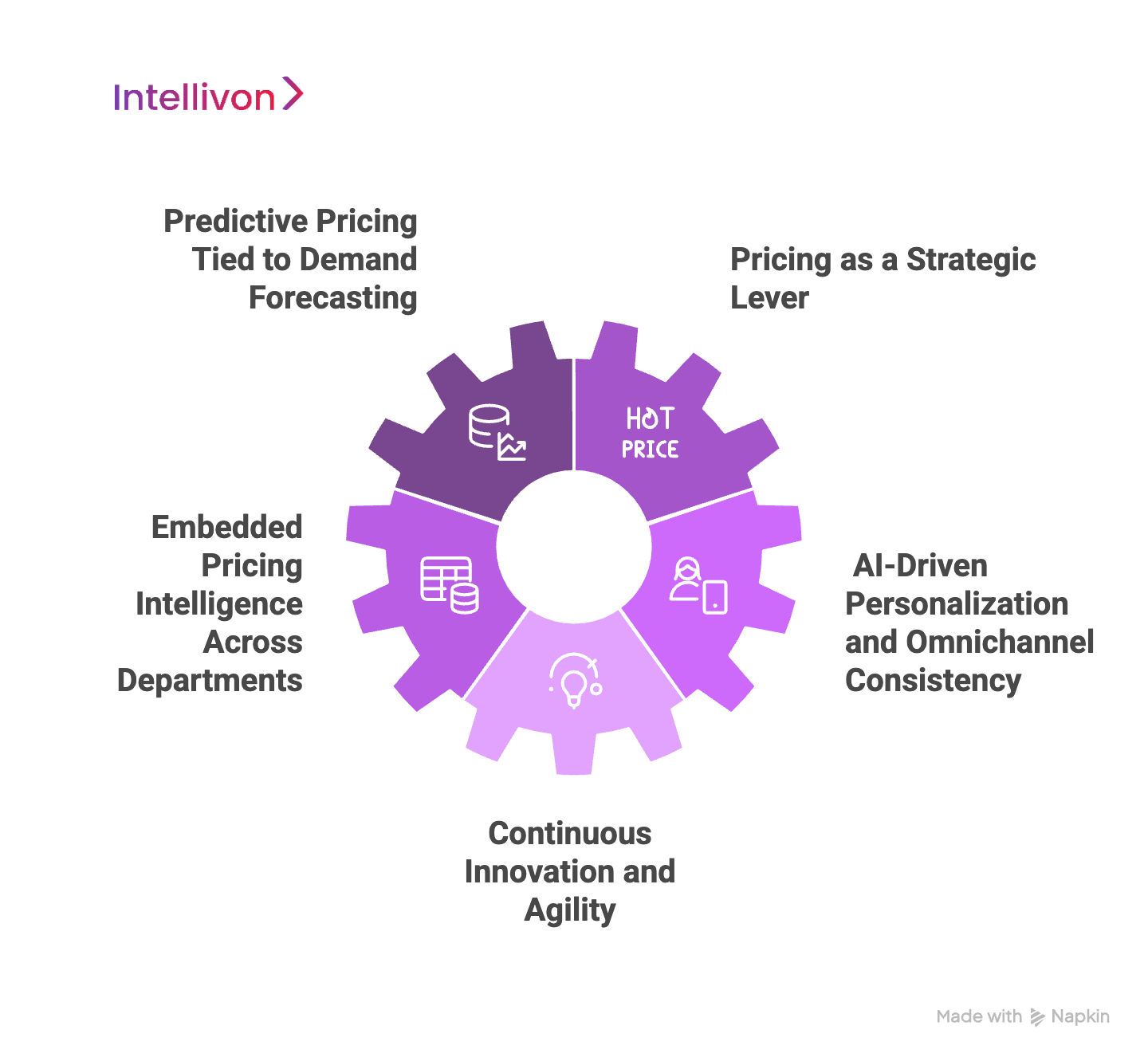
1. Predictive Pricing Tied to Demand Forecasting
Advanced AI pricing systems will move from reacting to demand to predicting shifts before they happen. By leveraging predictive pricing strategies, enterprises can proactively adjust prices ahead of major events, seasonal peaks, or supply chain disruptions, ensuring they maximize revenue and customer satisfaction.
2. Pricing as a Strategic Lever
Pricing will no longer be an afterthought but a critical driver of business value and competitive differentiation. In the future, companies will use predictive pricing not just to optimize prices in real-time but to shape customer behavior, manage margins, and respond instantly to market changes, positioning pricing as a key strategic tool for business success.
3. Embedded Pricing Intelligence Across Departments
Pricing intelligence will be embedded across all business functions, from marketing to finance to supply chain, creating a unified, data-driven approach to decision-making. Real-time insights will inform promotions, inventory planning, and financial strategies, ensuring every department works in sync to optimize pricing and drive business value.
4. AI-Driven Personalization and Omnichannel Consistency
AI-powered pricing engines will deliver hyper-personalized pricing tailored to individual customer behaviors and preferences, while also ensuring omnichannel consistency. Customers will experience transparent, fair pricing across all touchpoints, like online, in-store, or via mobile, while driving trust and loyalty, and optimizing conversions.
5. Continuous Innovation and Agility
The pace of change will accelerate, and enterprises must remain agile. With real-time data processing, A/B testing, and ongoing model refinement, businesses will quickly adapt to market shifts, consumer expectations, and regulatory changes, ensuring they stay ahead in a competitive landscape.
Enterprises that embrace this evolution will unlock new growth opportunities, optimize margins, and deliver superior customer experiences, staying ahead of the curve in a rapidly evolving market.
Conclusion
Dynamic pricing is becoming a key strategy for retail enterprises, not just a way to adjust prices. With the help of AI and data, companies can make more informed decisions, increase revenue, and enhance customer experiences. As pricing becomes more connected across different teams, it will help businesses stay competitive and grow in today’s fast-changing market.
Build Your Next Market-Responsive Pricing System With Intellivon
At Intellivon, we specialize in delivering cutting-edge AI solutions designed to transform how large enterprises approach pricing. With over 11 years of experience and a team of pre-vetted AI experts trained at renowned institutions, we bring unparalleled expertise to every project. Our proprietary frameworks and accelerators ensure a faster, smoother transition from concept to fully integrated dynamic pricing systems.
Our approach combines strategic consulting with a hands-on implementation model, offering the perfect blend of guidance and execution. We take a tailored approach to ensure that regional compliance is baked into every solution so your pricing system is both agile and fully aligned with local laws and regulations.
From Proof of Concept (PoC) to full rollout, we guide you through every stage, ensuring measurable success at each milestone. Partner with Intellivon to develop a market-responsive pricing system that keeps you ahead of the competition and ready for the future.
Let’s unlock the power of AI-driven pricing together. Talk to our AI experts today to start building your enterprise’s next dynamic pricing system.
FAQs
Q1. What is real-time market dynamic pricing?
A1. Real-time market dynamic pricing involves adjusting product prices instantly based on factors like demand, competitor pricing, inventory levels, and external market conditions.
Q2. What is a real-world example of dynamic pricing?
A2. An example of dynamic pricing is airline tickets. Prices fluctuate based on demand, time to departure, and seat availability, adjusting in real time to maximize revenue.
Q3. What is Amazon’s dynamic pricing strategy?
A3. Amazon’s dynamic pricing strategy involves adjusting prices every few minutes based on market demand, competitor prices, and inventory levels to optimize profitability and stay competitive.
Q4. What are dynamic pricing tools?
A4. Dynamic pricing tools are software platforms that use algorithms and data to automatically adjust prices in real time. They help businesses implement flexible pricing strategies based on market conditions.
Q5. Who profits from dynamic pricing?
A5. Businesses that use dynamic pricing can profit by optimizing prices based on demand and supply, increasing revenue, and gaining a competitive edge. Consumers may also benefit from personalized pricing or discounts in certain situations.

